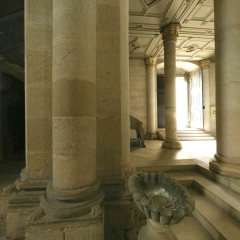
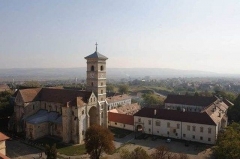
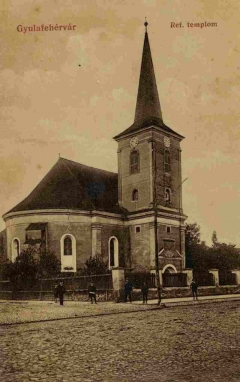
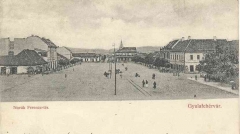
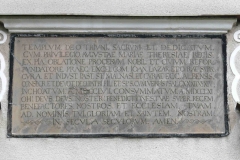
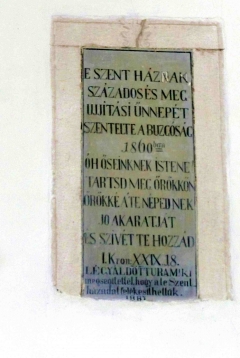
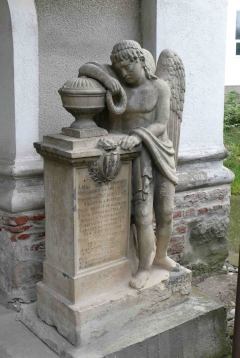
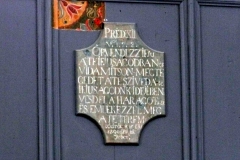
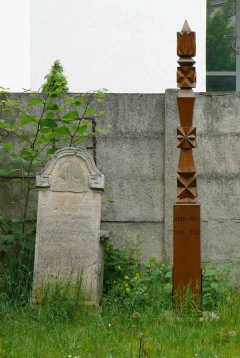
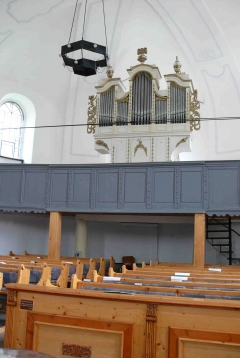
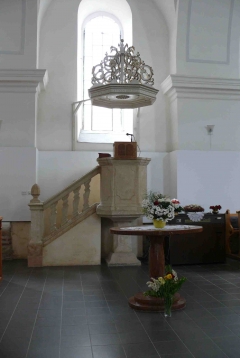
Alba Iulia, Weissenburg - Karlsburg
Gyulafehérvár (Alba Iulia) is situated at the confluence of Mures and Ampoi rivers, at south, at 95 km from Cluj. Between 1542-1690 was the capital city of the Principality of Transylvania, after that, from 1775 became the capital city of Alba county, and today is the headquarters of the Roman Catholic Church. Starting with 1577 we can talk about reformation, because in some documents about the settlement it is mentioned as the scene of religious battles between Unitarians and reformed people. In 1580 the former academical pilgrim in Wittemberg, Matheas Gemmeus, a great reformer, spread the word of God in this settlement. He is one of the first reformers in our community and region. Except the period of the Báthory family, in the period of the reformation the Cathedral was used by the reformed people. Actually István Bocskay handed over the Cathedral to the reformed community in 1604, which they used until 1716, when the Roman Catholic Diocese resettled here. Next to the church the reformed community also had a parochial house which was used as the headquarters for the bishop, dean and the clerk-cantors as well. (András Bánffyhunyadi was then a very famous cantor.)
The reformed college which was inherited around 1580 from the Unitarians, and which was earlier a catholic school, in 1613 was raised by Gábor Báthory to the rank of College, then in 1622 by Gábor Bethlen to the rank of Collegium Academicum (University). György Rákóczy Ist. put in function a typography in Alba Iulia, where the first Romanian New Testament was printed. (Noul Testament de la Balgrad, 1648).
Between 1604-1690 the Reformed Congregation of Alba Iulia was considered one of the most important Transylvanian protestant congregations. Its reverends were also deans and bishops and they enjoyed the trust of the principality. As a result of the Tartar invasion in the period of György Rákóczy IInd. the town was burnt down. After this the reformed community began to lose its strength. Despite the fact that the College founded by Bethlen Gábor moved to Aiud, in 1672, with the help of Mihály Apafi Ist. the College from Sárospatak found a home between the renewed walls of the college until 1716.
The College known with the name of Sárospatak-Gyulafehérvári College made our community to revive. The XVIII.th century is considered the worse period of the Reformed Congregation of Alba Iulia. In the time of the Habsburg integration and after the defeat of the Francis Rákóczy the IInd anti Habsburg Revolution (1711), Wallenstein, the builder of the fortress sent all the reformed followers and their institutions out of the fortress., saying that in the fortress, built between 1713-1738, there is no place for providing home to the common age; the place is needed for the Austrian soldiers. Indeed, the Reformed Congregation started to lose ground before 1700, when Miklós Bethlen chancellor at the Ministerialkonferenz from Vienna spoke about what buildings has to give up the Reformed Congregation, and what to receive as a compensation. In 1702 the reformed community lost the old building of the College. They also lost thechurch from Barabant (Borbánd) and the tabernacle of the College named after Kristóf Báthory. These buildings returned in the possession of the catholics. During the building of the fortress, in 1714, the Roman Catholic bishop and chapter returned in to the city. The restoration of the Roman Catholic Church and the building of the fortress by the army led to a second wave of loss for the reformed community. They lost the College built by Gábor Bethlen on its own parcel, the church (the present Catholic Cathedral), and in 1716, together with its institutions (episcopate, deacony, parish, College) had to move downtown, on a land offered as a consolation. The sermons were held in a wooden shed, and only the bell reminded of the fact that it is the house of God.
Between 1758-1761 a very important event happened. With an compensation offered by Maria Theresa for the reformed community, during the service of reverend István Málnási the new baroque church was built up. The economical life of the community was also helped by the fact that the Saxons form Calnic (Kelnek) gave a tenth part of the pilferage to the community. The incomes of the church decreased after the laws set in 1848, and despite the loss of the pilferage the community prospered. Its initiator was Károly Elekes dean and Transylvanian Reformed Clerk, whose life was described as: "sub pondere crescit palma", because he revived many communities Ighiu, Sard, Vurpar, Benic, Teius, Zlatna (Magyarigen, Sárd, Borosbenedek, Tövis, Zalatna, Abrudbánya), their buildings and record offices destroyed in the revolution and civil war from 1848-1849. In the autumn of 1848 he was arrested by the Austrian guards of the forteress. In 1850 Sard (Sárd) and Santimbru (Marosszentimre) were added to the Alba Iulia Reformed Community. In 1860, when the church celebrated a century of existence, he renovate the parish too. In 1913 it already had 17 related small communities with a total of 447 members. The reverend of that period was Lajos Gönczy, one of the greatest Transylvanian Protestant theologian of His time. The World War II. produced a great destruction of the library and record office of the reformed community. In the 1970, with the financial background received after selling one parcel in to the parish from Santimbru (Marosszentimre) managed to have water network, drainage, central heating and bathroom. After the communism the interior of the church was completely renewed; new pulpit, new benches and windows were made. This was possible with the help of “De Bron reformed Community” from Zeist, Netherlands. Also the outer drainage of the church was made then. During the service of Gudor András priest was built the Ferenc Rákóczy IInd. Community House. In 2011 all the windows were changed, the ceilings, the central heating, the bathroom and kitchen were totally remade. In present the Reformed Community of Alba Iulia has 322 members, but the communities Santimbru, Vintu de Jos, Sebes, Vingard, Vurpar, Sangatin, Pauca, Oarda de Jos (Marosszentimre, Alvinc, Szászsebes, Vingárd, Borberek, Szászsebes, Kisenyed, Pókafalva, Bergen, Alsóváralja) are administrated by Alba Iulia.
Reverends: Matheas Gemmeus - reverend in Alvinc too (1580), Benedek Ilosvai dean (1585), András Szalai (1585, 1587), János Jó Debreceni (1587 - 1592†), Péter Laskai (1586-1587), István Katona Geleji (1589-1649), János Hercegszöllősi (1588-1589), István Székelyhídi (1606), János Rettegi (1603-1615), János Búzás Kecskeméti (†1616), István Dési (1616-1618), János Dajka Keserűi (†1633), Ferenc Fogarasi (1619-1676), István Horti (1684-1689), Dániel Gajdó Csernátoni (1730-1749), István Málnási (1749-1786), András Ischi (1772-1777), János Ötves (-1776), József Keresztes (1776-1806), Dániel Demeter Szemerjai (1788-1810), Péter Székely (1799-), Károly Elekes (1838-1878), Dr. Lajos Gönczy (1914-1922), István Régeni (1920-1963), Dezső Fejes (1964-1970), Ferenc Bíró (1972-1976), Imre Bárdi (1977-1995), András Gudor (1996-2011), Dr. Botond Gudor (2011–).




